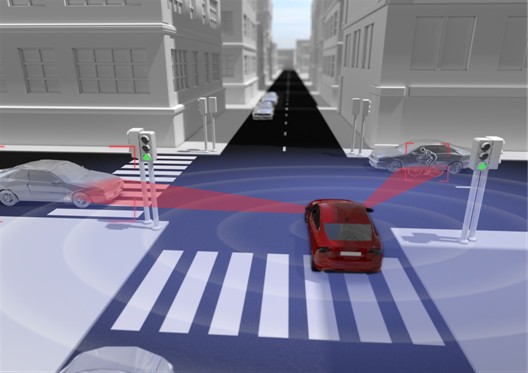
In order to achieve this lofty aspiration, Volvo will be relying on innovations in passive and active safety technology. One of the key pieces to Volvo’s no-fatalities puzzle is the 360-degree-view Sensor Fusion framework. With the four-year Non-Hit Car and Truck project set to wrap in December, Sensor Fusion could stand as the major innovation that makes their dream of ultimate safety a reality.
According to Volvo, Sensor Fusion uses sensors all around the car to link communication between cameras, radar, lidar, and GPS among other technologies in order to give the vehicle a complete sense of all potential threats around the car.
The 360-degree-view assists what Volvo calls a maneuver generator, which is able to utilize the information in order to determine the best course of action that will result in the least amount of damage. This includes automatic braking and steering, which is demonstrated in two test mules that Volvo has utilized in proving the system’s mettle.
“Volvo Cars is definitely on the front line when it comes to innovative active safety research and development. And with the Non-Hit Car and Truck project, we’ve taken a significant step towards realizing the vision that by 2020 no one should be killed or seriously injured in a new Volvo car,” says Anders Almevad, Project Manager for the Non-Hit Car Project at Volvo Cars.
The Sensor Fusion technology will also help make possible one of Volvo’s other 2020 goals—self-driving cars.
“The technology is also imperative for the development of self-driving cars, which will be able to automatically steer and brake to avoid collision with any object in any situation,” says Almevad. “Our primary objective is to focus on preventing different types of accident scenarios. But going forward, we will also continue to work on developing cars that adapt to each individual driver’s unique behavior.”
Volvo has proclaimed that the all-new 2015 Volvo XC90—which utilizes new safety technologies that include automatic braking at intersections and run-off road protection—will be among the safest vehicles on the road when it comes to market.
The News Wheel is a digital auto magazine providing readers with a fresh perspective on the latest car news. We’re located in the heart of America (Dayton, Ohio) and our goal is to deliver an entertaining and informative perspective on what’s trending in the automotive world. See more articles from The News Wheel.